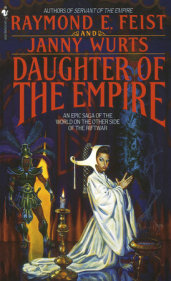 In the Garden of Iden by Kage Baker
In the Garden of Iden by Kage Baker
My rating: 2.5 of 5 stars
My first exposure to Kage Baker’s writing and to her Company series. In our future (about two centuries ahead of us), both time travel and immortality are discovered. As with most time travel scenarios in science fiction, history can’t be rewritten, so said travel is of limited use to the plot and the science is foggy at best. Time travel then becomes a means to transport the reader to a different point in our past. Equally useless to the entrepreneurs of the 24th century is immortality, which can only be applied to very young children and requires extensive cybernetic enhancement.
The Company (aka Dr. Suess) still finds a way to make a buck, sending scientists back to the distant past, recruiting young children from the native population, installing immortality, and putting them to work by scavenging and salvaging priceless art, books, plants, etc. for re-discovery and re-sale (by the Company of course) in the 24th century.
Mendoza is an orphan from the Spanish Inquisition rescued and then recruited by the Company at the very edge of the Pit. After several years of operations and education, she receives her first field assignment, not in the New World (as she desired to be as far as possible away from ‘the monkeys’), but in dreary damp England. While collecting rare specimens from the Garden of Iden, she falls in love with one of the manor’s servants, a fiercely fanatical Protestant young man adrift in a resurgence of Catholicism courtesy of Queen Mary and Prince Phillip of Spain.
I enjoyed the historical aspects of the novel, especially England during the Counter-Reformation. Kage Baker did a good job of immersing me in both Spain and England. I still prefer Connie Willis’ writing style as evidenced in The Doomsday Book and her other Oxford time travel novels and stories.
I’m not a fan of romance, especially teenage romance (and Mendoza is in her late teens while on this first assignment), so I struggled through about half of this book. I also missed some of the humor (or failed to register it as such) exhibited by her fellow agents and their reactions to the ‘monkeys’ (the cyborg agents’ derogatory term for mere mortal men). The predictably tragic ending arrived to my great relief and the novel finally moved back to the original mission – preserving plants.
Perhaps I took the fear and loathing of the immortal agents towards human beings too much to heart. It concerned me that these agents of the Company felt such disdain and dread towards their former brothers and sisters. Commerce and computers seized the day, while the monkeys scampered about and threw bananas at each other. I got the distinct impression that the Company and civilization of the 24th century felt humans were irredeemably inclined to violence and destruction, in a constantly repeating cycle.
I read this novel as part of the Beyond Reality June 2011 book of the month selection for science fiction. To follow or join in the discussion, please stop by our site.
























